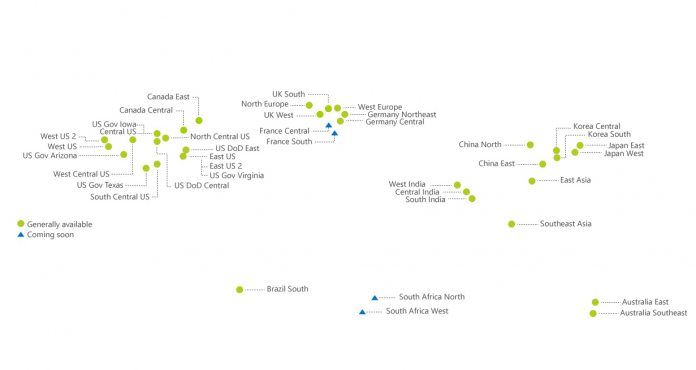In total, the company now has 42 Azure regions around the world. By expanding its cloud reach, Microsoft can continue to grow its network and services. Azure has been a driving force behind the company’s revenue growth in recent years. Microsoft says its two new Australian regions will go live during the first half of 2018. The company was quick to point out that both new regions will be certified to handle unclassified and protected government workloads. Under Australian law, “protected” is the first level of national security for classified information. Microsoft says it is collaborating with Canberra Data Centers to ensure its regions can manage these protected workloads. Canberra Data Centers is a company that already provides specialization in managing host secure government data. As with its existing two regions, the new markets will also run machine learning, cybersecurity, data management, and IoT workloads for the Australian Signals Directore (the nation’s intelligence agency). Microsoft is certainly not alone in expanding in Australia. Google has recently opened a Sydney cloud region, quickly followed by IBM’s expansion into the country’s biggest city.
Azure Growth
In its most recent financial report, Microsoft confirmed that intelligent cloud is continuing to push the company’s revenue growth. In total, revenue was $24.7. billion non-GAAP ($23.3 GAAP), versus 22.6 (20.6) a year ago. Operating income for the quarter was 7 billion ($5.3 GAAP), while diluted earnings per share stands at 0.98, or 0.87 GAAP. Azure was a significant part of this growth. The cloud platform recorded revenue of $7.4 billion, an 11% rise, or 12% in constant currency. This was propelled by a growth in server products and cloud services revenue, which was up 15% (16% CC). Azure revenue alone was also up. by 97% (98% CC).




